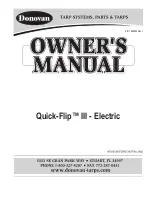
BRAKES 5A-5
BRAKE PEDAL AN D LINKAGE
There are three basic types of brake pedal
and linkage installations used on vehicles covered
by this manual. They are illustrated in figures 5
and 6.
BRAKE PEDAL REPLACEMENT
CONVENTIONAL
These models have a suspended type brake
pedal mounted in a bracket which is secured on the
underside of the instrument panel.
As indicated on figure 5, the brake pedal pivots
on the outside of sleeve, and clutch pedal shaft
extends through inside of sleeve. Nylon bushings
are installed in each end of brake pedal tube, form
ing the contact between pedal tube andpedal sleeve.
Clutch pedal shaft is carried in nylon bushings
installed in each end of sleeve. The brake master
cylinder is mounted on the engine side of the dash.
Adjustable push rods, extending through dash into
master cylinder bores, are attached to brake pedal
lever and to clutch pedal shaft lever by special
bolts.
In released position, each pedal is held against
a rubber bumper by pedal return springs. The fol
lowing pedal replacement procedures cover both
clutch and brake pedals.
P E D A L R E M O V A L (Fig. 5)
In order to remove the brake pedal, the clutch
pedal must also be removed.
1. Remove bolts attaching brake and clutch
master cylinder push rods to pedal levers.
2. Unhook pedal return springs.
3. Loosen clamp bolt securing clutch pedal
shaft lever on end of clutch pedal shaft and remove
lever from shaft. Remove spring washer, bushings,
and clutch pedal and shaft from sleeve.
4. Remove bolt attaching pedal sleeve to
panel-to-dash brace. Remove sleeve from brace,
at the same time removing brake pedal and bush
ings.
P E D A L IN S T A L L A T IO N
Before installing pedals, check bushings in
brake pedal and in pedal sleeve for evidence of
wear or deterioration. Bushings are split type and
can easily be removed and replaced.
1. Install bushings in pedal tube. Position
brake pedal at underside of instrument panel-to-
dash brace. Insert pedal sleeve through brace and
pedal and attach sleeve to brace with bolt and nut.
2. Install bushings in sleeve. Insert clutch
pedal shaft through sleeve and install spring washer
and pedal shaft lever on end of shaft. Tighten lever
clamp bolt firmly.
3. Connect pedal return springs.
4. Connect master cylinder push rods to brake
and clutch pedals, using special shoulder bolts,
lock washers, and nuts. Tighten nuts tcf 25-30 foot
pounds torque.
5. Adjust push rod to provide rod to piston
clearance as directed below:
PUSH R O D A D J U S T M E N T
(Refer to Figure 5)
1. Loosen lock jam nut on push rod.
2. Turn push rod into rod end until brake
pedal does not contact the pedal stop bumper with
push rod bottomed in piston cup.
3. Place a .040” shim between brake pedal
and pedal stop bumper, then adjust push rod until
pedal just touches shim and push rod just contacts
piston cup.
4. Hold push rod firmly and tighten lock nut.
5. Check operation of brakes.
BRAKE PEDAL REPLACEMENT
TILT CAB
(Refer to Figure 6)
R E M O V A L
In order to remove the brake pedal on tilt cab
models, it is necessary to first remove the clutch
Figure 5— Brake Pedal and Master Cylinder
Installation (Conventional Models!
CHEVROLET SERIES 70 -80 H EAVY DUTY TRUCK SH O P M A N U A L
Summary of Contents for 70 1969 Series
Page 1: ...CHEVROLET HEAVY DUTY TRUCK SHOP MANUAL...
Page 3: ......
Page 11: ...LUBRICATION 0 4 CHEVROLET SERIES 70 80 HEAVY DUTY TRUCK SHOP MANUAL...
Page 27: ......
Page 119: ......
Page 361: ......
Page 371: ......
Page 427: ......
Page 443: ......
Page 451: ......
Page 493: ......
Page 499: ......
Page 549: ......
Page 555: ......
Page 609: ......
Page 715: ...am...
Page 745: ......
Page 910: ......
Page 913: ......





































